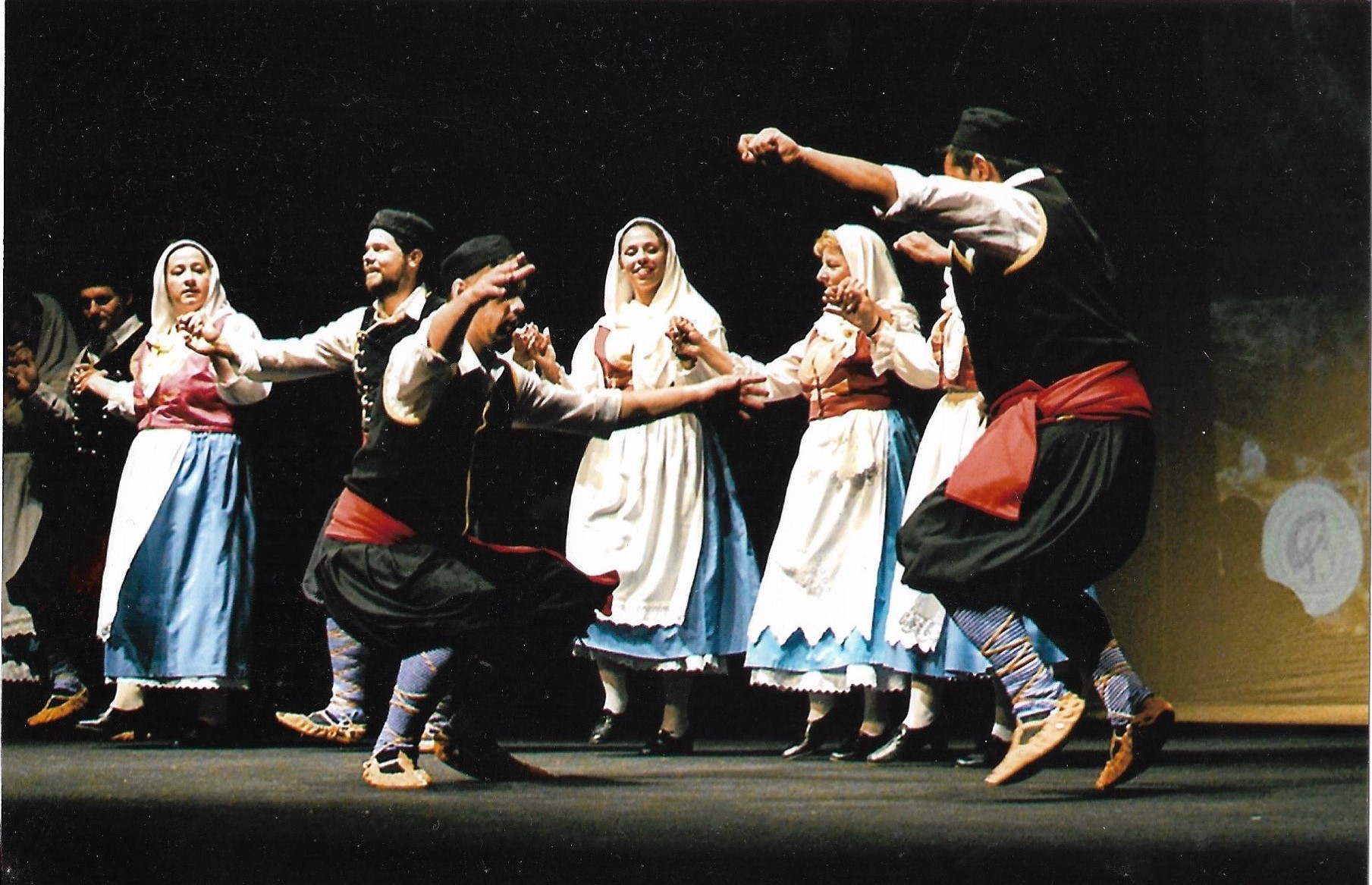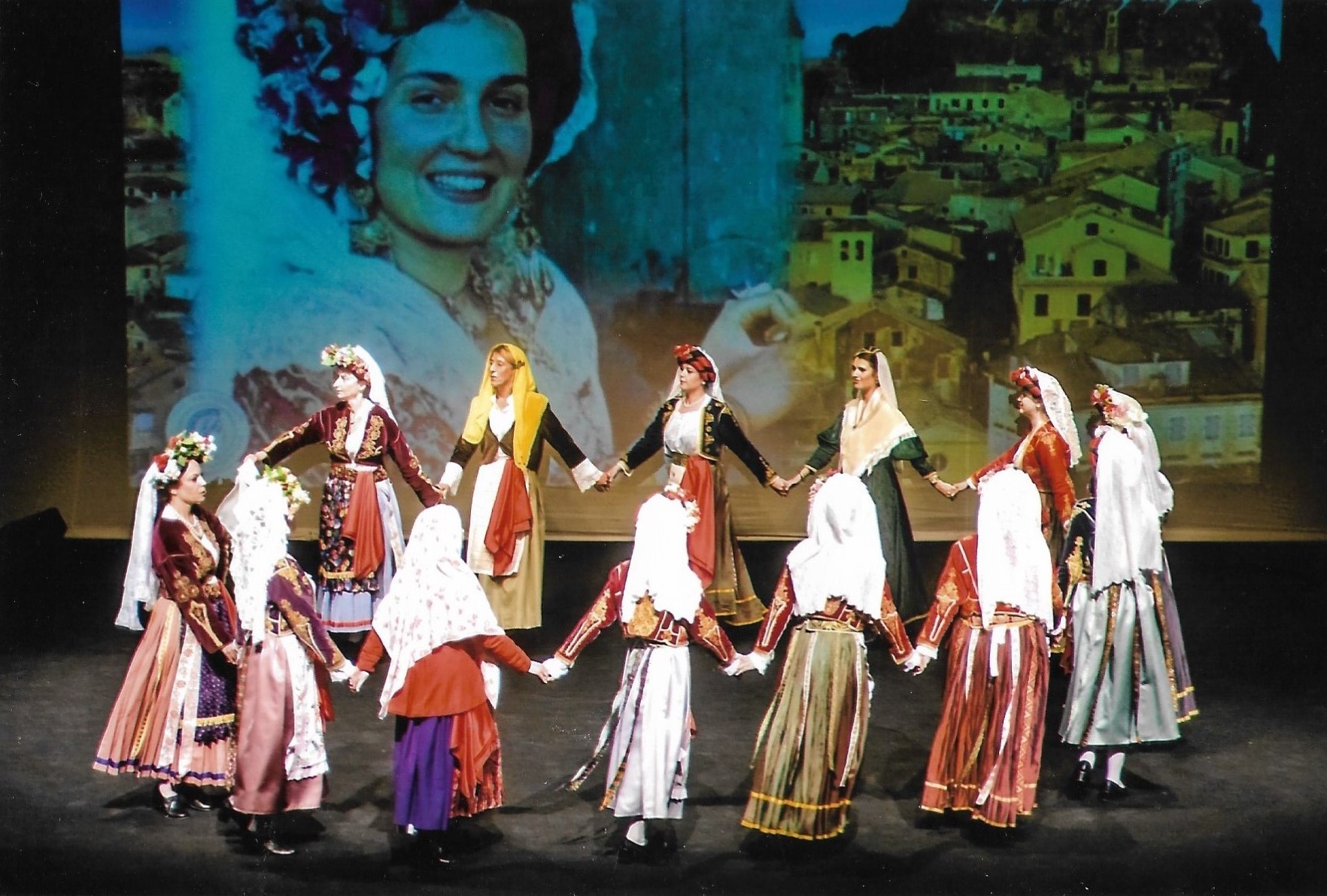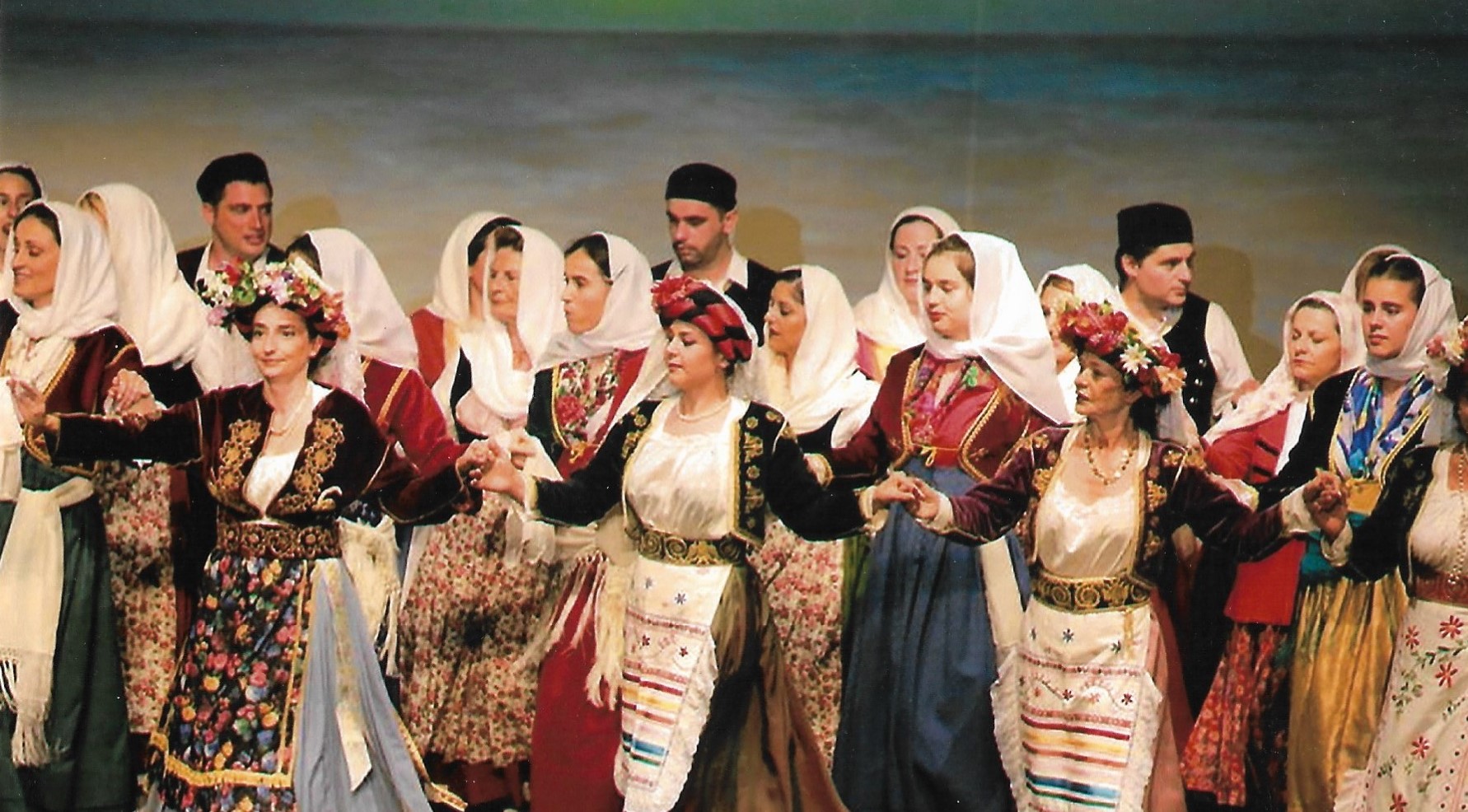Traditional dances of Kefalonia

Kefalonia has several dances with a strong traditional color and the main feature is the simplicity of the movements and the light rhythm, elements that reflect the temperament of the inhabitants and the popular Kefalonian spirit. They are free, dynamic, cute, lively dances that give the two sexes the opportunity to meet, talk with their eyes and fall in love. As a whole, they are erotic dances and the most representative are:
Ballos: It is the most famous and representative dance of Kefalonia. It is danced with special leventia, grace and fun and with many variations in the song and the performance from region to region. Erotic dance which highlights the abilities of the dancer and especially the first dancer. A peculiar dance that begins in a circular group and then becomes paired, with a continuous play between the man and the woman. The song of Ballos… "My violet is in bloom".
Divaratikos: It is a representative dance of the island. It is also called Koutso, Koutsostamatito or Gyrouzato. It took its name from the village of Divarata. It is distinguished for the brio, the musical variation and expresses the beauty and dynamism of life. It is danced by both sexes. Its feature is the cuts in which the dancers stop for a moment and immediately continue the circular and fast dance.
Roido: Cheerful dance, danced in a simple circle by men and women with a handle from the palms and bent elbows. Characteristic of it is the many cross-site steps. The dance originates from the Peloponnese, where it is still danced. It is danced especially at weddings and the name refers to the name of a girl or the spree that takes place at a wedding.

Manetas: Kefalonian variant of the song or rhyme that originates from the Aegean. The dance has a cross handle and is danced in double and single circle. It refers to an island story, moving, which has as its case the eternal story of the slandered woman who eventually becomes a victim of her honesty.
Vlachopoules or Moschopoules: He is a local dance at a rate of 7/8 (like kalamatiano). Beautiful, lively dance danced in a simple circle in pairs with hands holding by palms.

Lagadi or Koutsos: It is danced with the grip of the hands from the palms. It owes its name to the characteristic gait of a part, which is the bounces by lifting the leg.
Stavroto Pylarou: A characteristic sirtos dance that took its name from Pylaros. It is danced by both sexes with a simple hand grip. Its feature is the cross steps.
ELENI FOI,
PHILOLOGIST - CURATOR
PHILOLOGICAL, FOLKLORE & THEATER
LYCEUM OF GREEKS OF ARGOSTOLI